Importance of Punctuation in Research Papers (Part 3)
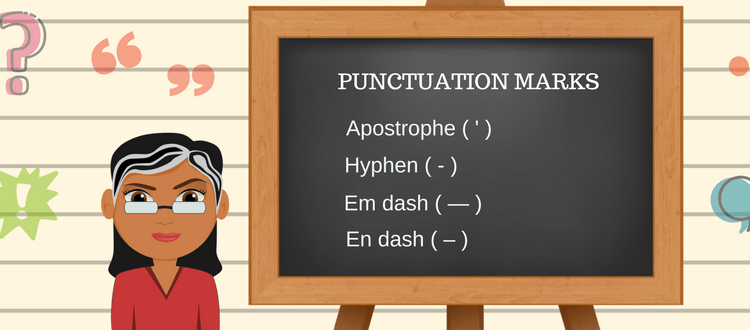
We’ve already covered the basics of periods, commas in the first article, and those of semicolon, colon and quotation marks in the second article of this series. Now, it’s time to focus on some of the finer points of punctuation in research papers.
If you are someone who is looking for expert assistance on using punctuations and other conventions of academic writing, we recommend Trinka a one-stop solution for your academic writing needs. Right from advanced grammar corrections, vocabulary, technical spellings, to formal tone and syntax, Trinka does all! Its powerful AI is custom-built to address difficult errors unique to academic writing.
In this article, we will talk about how punctuation marks like dashes, hyphens, and apostrophes can help us express ideas clearly and easily.
When to Use an Apostrophe?
Apostrophes (‘) have two main functions: to show possession, and to show missing letters in a word. Apostrophes are often misused even by native speakers. Let’s look at some examples to see why.
- Showing Possession
In English, we can use an apostrophe + the letter s to indicate that something belongs to someone or some organization. For example:
Todd’s cat is fat.
In this sentence, the cat belongs to Todd. We know this because of the apostrophe s.
This becomes confusing when a word itself ends in the letter s. But don’t get confused! There is an easy rule to remember. If the possessor is a person or organization whose name ends in the letter s, you can show possession in two ways.
ISIS’s approach to the city caused everyone to flee.
ISIS’ approach to the city caused everyone to flee.
If the possessor ends in a regular plural letter s, add an apostrophe after the letter s.
The scientists’ skepticism cast doubts on the reliability of their results.
If you need to show joint possession, add the apostrophe s after the last person listed.
Healy and Grimes’s article indicates that all previous research is now obsolete.
If you place an apostrophe s after each name in a list, it sounds like you are talking about multiple things possessed by multiple people.
Healy’s and Grimes’s articles indicate that all previous research is now obsolete.
Although all of the examples we have listed above are correct, some academic style guides have their own preferences. Always consult the style guide of the publisher or professor you are writing for. You can also use Trinka to follow a specific style guide of a publisher, across your entire document.
- Showing Missing Letters (Contractions)
The second common use of apostrophes is to denote contractions. English has a set of words that can be combined using an apostrophe to form what are called contractions. Contractions denote the same meaning as the set of words combined but have a one-two letters missing. These are typically used only in informal language and are not recommended in formal academic writing. Here are a few common examples:
I’ve = I have
We’re = We are
Don’t = Do not
A more complete list of contractions can be found here. Remember, you can’t just make your own contractions. “America’re going to the polls” is not an acceptable use of an apostrophe, although it is creative.
Most Misunderstood Punctuation in Research Papers
Now it’s time to talk about the three most ‘misunderstood’ punctuation marks in the room (well, maybe not, but people confuse them quite often!). While all of these marks are similar, they are used differently and they are, in fact, slightly different from one another.
When to Use the Hyphen?
- Hyphens (-) are used to join words or parts of words. They are shorter than the en dash (–) and the em dash (—). Hyphens are used to join compound words, such as ‘self-respect’. However, as language evolves, so do the words that we hyphenate. Some words that were earlier used as hyphenated are no longer used with hyphens. For example, it was standard to write the word ‘cooperate’ as ‘co-operate’ in the past.
- You should always use a hyphen when not using one could lead to confusion. For example, ‘ten year old pigs’ should be hyphenated. Without a hyphen, the phrase could be read to mean ‘ten year-old pigs’ or ‘ten-year-old pigs’. Both the phrases have different meanings and hence can be confusing. If you aren’t sure whether a compound word should be hyphenated or not, search it in Google or consult your journal style guide.
- Hyphens should also be used with compound modifiers that come before nouns.
The study was ethically sound. (hyphen absent: the modifier follows the noun)
The ethically-sound study received much acclaim. (hyphen present: the modifier precedes the noun)
When to Use the En Dash?
- The en dash, named for being the approximate width of an uppercase letter N. The en dash is often mistaken for a hyphen, and functions in a similar way. In formal print publications, en dashes are used to indicate ranges for dates, times, scores, page numbers, and so on. For example:
The raw data for the statistics referenced above may be found on pages 44– 47.
The doctor rescheduled my appointment for 4:30–5:30pm.
Note that in informal writing, a hyphen is often used instead of en dash.
- The en dash is also used when we want to use multiple words as adjective modifiers. As we saw above, hyphens do the job of joining compound modifiers when they come before a noun. Think of an en dash as a kind of super hyphen when you have a long compound modifier.
The archaeologists carefully dug around the pre–World War II era human remains.
If we were to use a hyphen for the full compound modifier, we would be writing “pre-World-War-II-era”. This would look quite awkward in terms of appearance. The en dash fixes this problem for us.
When to Use the Em Dash?
- The em dash takes its name from being about the same width as an uppercase letter M. It is used more in informal writing to indicate a pause or interruption, or to emphasize the information that follows.
And yet, when the journalists finally arrived—after an arduous journey of over 24 hours—they found they had been lied to from the beginning.
The em dashes are used here to indicate that the information within them is rather shocking.
- The em dash is also used for denoting an incomplete speech.
“Wait!” she shouted. “I’ll come with—”
In this example, the em dash indicates interrupted speech. Perhaps a door was closed on the speaker’s face, cutting off her sentence.
Well, punctuations can get tricky sometimes, especially in academic writing. However, using a smart language correction tool like Trinka makes it easier. Trinka corrects complex grammar errors and enhances your writing to make it ready for the global audience.
What other punctuation marks in academic writing challenge you? Do you have more questions about apostrophes, dashes, and hyphens? Please share your thoughts with us in the comments section below.







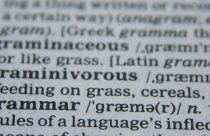
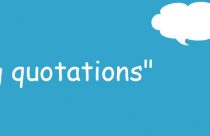
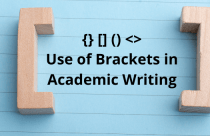
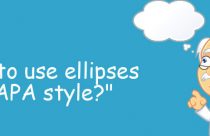
I wonder if apostrophes can be used instead of quotation marks in an academic text, when there are man new terms that need noting. I am editing a text that has endless quotation marks for all sorts of reasons. Can italics replace quotation marks for emphasis or making note of a new term?
Dear Ruth,
Thank you for your question. Apostrophes and quotation marks are two different types of punctuations altogether; they cannot be used interchangeably. However, replacing quotation marks with italicized text is entirely feasible; it is more or less a matter of style.
Kindly go through our articles on the Enago Academy website https://www.enago.com/academy/category/academic-writing/ to clarify your doubts related to the use of punctuation marks.
Did you get a chance to install our free Mobile App? https://www.enago.com/academy/mobile-app/. Make sure you subscribe to our weekly newsletter https://www.enago.com/academy/subscribe-now/.